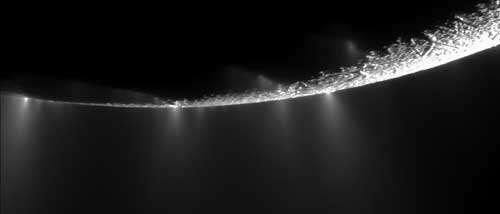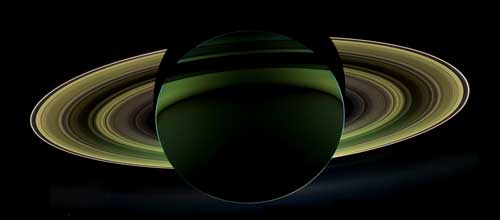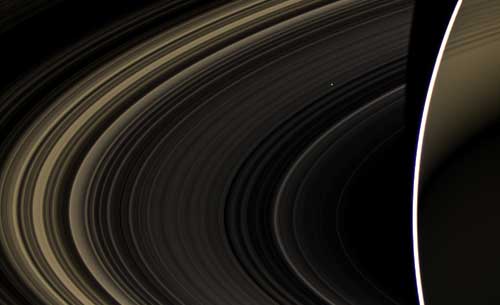Images by NASA's Cassini spacecraft reveal the wondrous Saturn system in fantastic detail. These observations have also provided fodder for detailed simulations of what's afoot in the rings. Below, you'll find images that didn't make it into our May 2013 cover story on Saturn's majestic Hula-Hoops, plus up-close looks (both real and animated) that follow how the rings change with time.

Credit: NASA / JPL / Space Science Institute

Credit: NASA / JPL / Space Science Institute

Credit: NASA / JPL / Space Science Institute

Credit: NASA / JPL / Space Science Institute

Credit: NASA / JPL-Caltech / Space Science Institute
The moon Prometheus slowly collides with the diffuse inner edge of Saturn's F ring in this movie sequence of Cassini images. The oblong moon pulls a streamer of material from the ring and leaves behind a dark channel. Once during its 14.7-hour orbit of Saturn, Prometheus (102 kilometers, or 63 miles, across) reaches the point in its elliptical path called apoapse, where it is farthest away from Saturn and closest to the F ring. At this point, Prometheus' gravity is just strong enough to draw a "streamer" of material out of the core region of the F ring. Image sequence taken 23–24 November 2006.
A series of images from Cassini show how the B ring's dark spokes change with time.
Not real, but really cool, is an animation of the B ring, which shows the ring from above, with the radial direction running from left to right. The frame moves with the orbital motion of material at the frame's radial center; thus material radially inwards moves faster (ahead) and material radially outwards moves slower (behind); this is the so-called Keplerian shear. The particles range up to 5 m radius and have internal density of 0.5 g/cm3. Click to view.
 0
0
Comments
You must be logged in to post a comment.